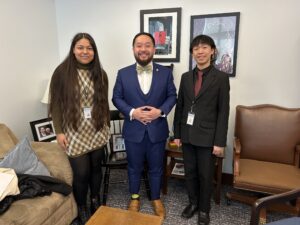
The committee chair for this year’s investment bill is led by Chair Fue Lee (DFL, North Minneapolis). The Capitol Investment Bill is more commonly referred to as the “bonding bill” because the state typically relies on borrowed money — bonds — to invest into public works projects. Bonding bills typically run on a two-year cycle. The first year being the budget year, when they decide how to allocate taxpayer money, and money they already have in general. The second year is typically the policy year, which tends to focus on how to allocate borrowed money as well as passing policies that don’t cost anything.
This year is the policy year, so the legislature is prioritizing investing into well planned projects, infrastructure and zero-cost policies. Even though the legislative session only recently began there has been some thought on projects such as the light rail and Hennepin Energy Recovery Center (HERC). The HERC is a facility located in downtown Minneapolis that burns garbage to generate energy and greatly affects the air quality around it in the process.
ThreeSixty also talked to the DNR about how it is requesting support from the bonding bill.
This interview has been edited for length and clarity.
Would you like to see funds go to having the light rail expand into North Minneapolis?
I think whatever projects we fund, I really want to represent what a lot of the community wants. There are some concerns with some of the residents who will be impacted, and businesses, and I do agree with them. If we’re going to have one of the best forms of transit, we must provide support for those businesses and those residents that will be impacted. So that’ll be an ongoing conversation over here.
I think we do need some form of transit there to help connect our residents to other parts of the region. I’ll be supportive of whatever project ends up there by making sure our residents are being heard, and actually get the resources that they need. … Having money for light rails, or projects like that, will be a nonstarter for my counterparts on the other side of the aisle, so that will be a tough one. Fortunately, last year, we were able to pass a law to allow for the Metropolitan Council to raise revenue through taxes so that if they want to move forward, I think actually use some of the funds that they were able to raise to put towards that project.
Will the HERC be impacted by this year’s bonding bill?
Last year, it was in my budget that I required them to have a plan to shut down the HERC. Right now, they’re not moving forward with that plan. … I think that I would still want to require them to have a plan to close it down. If you’re asking me, are we going to have funds to, shift or repurpose that? I don’t think we will have that capacity in our bill. We’re still going to put the challenge on Hennepin County to come up with a plan to really listen to our citizens to shut that down.
Is there a major concern that the 2024 bonding bill does not cover that you think should be considered?
I think this will probably fall more into one of those three goals that I have around advancing racial equity. Typically, we can only fund nonprofit projects with general fund cash, but we might not have some cash available this year. So just taking a step back, bonds were borrowed against state debt, and so that’s why we need to only fund public projects where we have cash on hand that we can use to pay for projects. Without cash this year, we might not be able to support community organizations that do crucial work in all of our communities across the entire state.
Aketzally worked with Madison McVan, a reporter with the Minnesota Reformer, and Harry Colbert, Jr., MinnPost Managing Editor, to finish their story. This story was completed at ThreeSixty’s Winter News Team: Capitol Edition in February 2024, where high school journalists covered important legislative issues, impacting Minnesota youth. Read more stories here.
